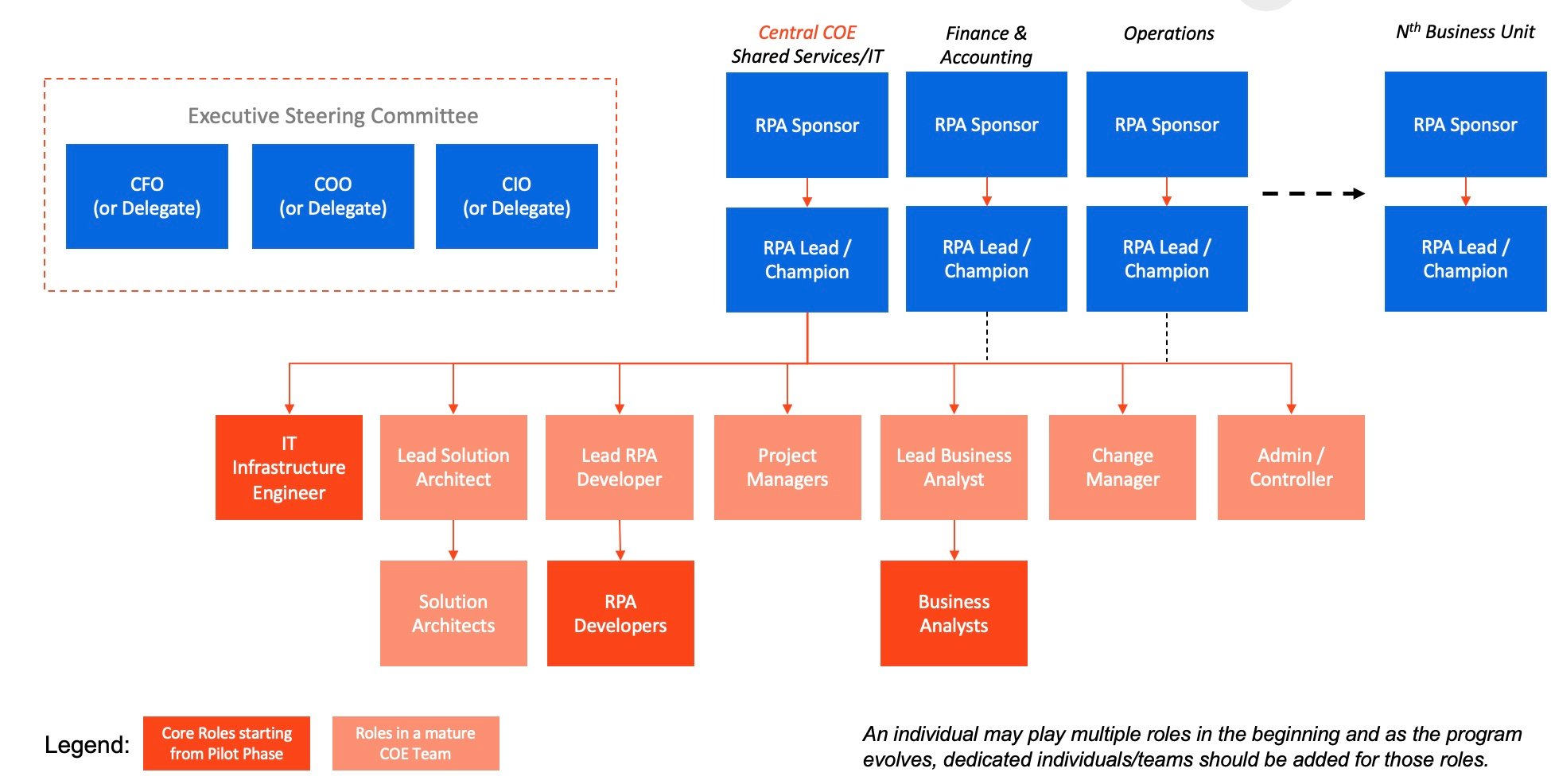Critical Success Factors for Your Intelligent Automation Transformation
Share at:

Editor's note: this is a guest post. Views expressed in this article are the author's own views and not necessarily representative of UiPath.
Intelligent automation (IA) has the potential to deliver enormous benefits for your organization, including reduced costs, increased customer satisfaction, better employee morale, improved compliance, and more effective prevention of fraud and errors.
However, the digital transformation process can be challenging. You may face obstacles such as people’s resistance to change, technical challenges, inadequate or poor-quality data, or difficulty finding the talent or resources needed to achieve the transformation.
Based on my experience leading hundreds of digital transformations across different industries, I’ve identified the following critical success factors to help yours succeed.
Support from top management
Your company’s transformation to intelligent automation is a deep structural change that will impact the whole organization. As with any significant change, the vision and tone must be set by top management. Sponsorship from top management is also vital to unlock the levels of investment necessary to make the IA transformation a success.
Conversely, a digital transformation that’s purely an initiative of the IT department and lacks the support of C-level executives is more likely to fail.
A scalable plan
Think big, but start small. Make a multi-year plan, but make it flexible and adaptable. Build a business case and a high-level roadmap for the next one to three years.
Start by conducting an IA opportunity assessment, identifying areas that can be automated and prioritizing them based on feasibility, complexity, and expected impact.
Related read: How to Automate Your Business: Five Operational Automation Best Practices
Identify a pilot project that’s self-contained and achievable, yet with high impact. That way the pilot can be used to demonstrate the benefit of IA to other managers and employees. This will give your IA transformation enough momentum to progress through the rest of the organization rather than coming to a stop after the pilot.
Implement the pilot, and actively learn from its successes and failures. Based on those lessons, roll out the rest of the transformation in stages, gradually increasing the scale and speed of the rollout to maximize impact.
Expanding the transformation across your whole organization will enable economies of scale and leverage of skills, and deliver the highest impacts.
Get the white paper: Charting The Automation Journey: A 3-Stage Model
Although vendor selection is important, I don’t recommend spending more than a few weeks on it, because what you gain in improved features or cost savings you could lose in tempo if you spend too long deciding. It’s better to get started as soon as possible and begin generating cumulative benefits relative to your competition.
It’s also important to anticipate IT requirements and prepare adequate infrastructure in advance. Don’t let your IA transformation be held up by something trivial like inadequate hardware or a lack of software licenses.
A business transformation
Your IA transformation is more than just a technology project. It’s a business transformation that involves people and processes at least as much as technology. Include change management, employee retraining, and process redesign in your plans from the beginning.
In my experience, the most successful IA transformations are achieved using clear governance that represents both business and IT. The project should be overseen by an IA leadership committee—including top management and high-level representatives from all affected functional areas. The committee will take charge of the IA vision, business case, and roadmap.
I also recommend creating an IA center of excellence (CoE), in charge of implementing the transformation according to the leadership committee’s vision.

Example CoE team roles (source)
The delivery of the project involves changes to IT, business processes, operations, and employee training, so the CoE must contain talent from all these areas. The CoE is also responsible for:
Developing new policies and frameworks to accompany the IA transformation
Creating and maintaining assets (such as tools, data silos, or standards) that can be shared among multiple IA initiatives within the company
Innovating new concepts and technologies to advance the company’s IA journey further in the future
A digital journey
IA is an ongoing journey, not a one-off project. Your company’s IA infrastructure will continue to evolve as the available technologies advance. It’s important to build teams that can guide your company along this journey over the coming years.
Don’t rely completely on external consultants. Instead, consider using internal recruitment and retraining to build your IA CoE, staffing it with loyal employees with relevant domain knowledge and an understanding of your company culture. You can identify good internal candidates with an interest in the topic by setting up interest groups, organizing competitions and games, and hosting lectures from external experts.
Regardless of what mix of external and internal talent you use, I recommend building it as soon as possible, allocating people to the project from its early stages. This gives them vital background knowledge and inspires them to take ownership of the outcome.
The IA CoE has an ongoing strategic role in identifying new automation opportunities as technologies become more sophisticated and affordable. The CoE should build roadmaps based on a long-term perspective with a focus on innovation, flexibility, and sustainability.
A new company culture
Every employee across the organization needs to understand the benefits of IA to the company as a whole and to themselves. With good communication, education, and change management, you can inspire people to see IA positively: as a useful tool for augmenting their productivity and making their work more interesting, not as a threat.
Show people the positive impacts of IA, using examples from other companies or your own company’s pilot. Teach people how to use IA to make their day-to-day work easier. Focus on the ways it will benefit them by:
Automating the tedious parts of their job
Giving them access to higher-level insights
Empowering them to make more valuable contributions
Increasing their own market value and earning potential
Be honest about the fact that not everyone will be able to keep their old jobs, and offer people an attractive range of options for upskilling and redeployment.
Finally, democratize the automation journey itself. Engage people in developing the changes that affect them: encourage them to identify IA use cases in their day-to-day work, involve them in the redesign of the associated business processes, and, with the help of low-code and no-code platforms, empower people to help build the automation solutions themselves.
Check out my other UiPath blog posts.
Special thanks to Rachael Churchill for assistance with this article.
The content of this article is inspired by the Amazon bestseller Intelligent Automation.

Author, Intelligent Automation
Get articles from automation experts in your inbox
SubscribeGet articles from automation experts in your inbox
Sign up today and we'll email you the newest articles every week.
Thank you for subscribing!
Thank you for subscribing! Each week, we'll send the best automation blog posts straight to your inbox.



